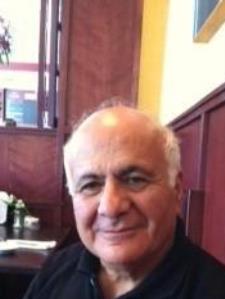M K.
asked • 03/24/14Compound Interest and Geometrical Sequences
$1000 has been in a savings account where it has earned 5% interest per year from 1799-2014. How much money is in the account?
Please include all steps and show how you get from the compound interest formula to the sum of a geometric sequence formula. Thanks!
More
2 Answers By Expert Tutors

Steve S. answered • 03/25/14
Tutor
5
(3)
Tutoring in Precalculus, Trig, and Differential Calculus
“$1000 has been in a savings account where it has earned 5% interest per year from 1799-2014. How much money is in the account?
Please include all steps and show how you get from the compound interest formula to the sum of a geometric sequence formula.”
You can’t use geometric series to solve compound interest problems, as I explained here: http://www.wyzant.com/resources/answers/30303/geometric_series_and_sequences_questions_help_updated.
The Compound Interest Formula is:
A = P(1 + r/n)^(nt), where
t is the number of time units,
n is the number of times IN EACH TIME UNIT that interest is calculated and added to the account,
r is the interest rate PER TIME UNIT,
P is the original amount called the Principal, and
A is the amount in the account.
For this problem:
t = 2014 - 1799 = 215 years
n = 1 times per year interest is calculated
r = 5%/year = 0.05/year
P = $1,000
A = 1000(1 + 0.05/1)^((1)215)
Now simplify and use your calculator.
Please include all steps and show how you get from the compound interest formula to the sum of a geometric sequence formula.”
You can’t use geometric series to solve compound interest problems, as I explained here: http://www.wyzant.com/resources/answers/30303/geometric_series_and_sequences_questions_help_updated.
The Compound Interest Formula is:
A = P(1 + r/n)^(nt), where
t is the number of time units,
n is the number of times IN EACH TIME UNIT that interest is calculated and added to the account,
r is the interest rate PER TIME UNIT,
P is the original amount called the Principal, and
A is the amount in the account.
For this problem:
t = 2014 - 1799 = 215 years
n = 1 times per year interest is calculated
r = 5%/year = 0.05/year
P = $1,000
A = 1000(1 + 0.05/1)^((1)215)
Now simplify and use your calculator.

Parviz F. answered • 03/24/14
Tutor
4.8
(4)
Mathematics professor at Community Colleges
2014 - 1799 = 215 years that $1000 was in saving account.
Compound interest of 5% for 215 years
1000 ( 1 + 0.05) ^215 = 35, 950,000
Problem stated " earned 5% interest per year", means that average interest rate earned was 5%
in which case
The money at year 2014 will be
1000 ( 1 + 215 ( 0.05) = 11,750
Still looking for help? Get the right answer, fast.
Ask a question for free
Get a free answer to a quick problem.
Most questions answered within 4 hours.
OR
Find an Online Tutor Now
Choose an expert and meet online. No packages or subscriptions, pay only for the time you need.





M K.
03/24/14